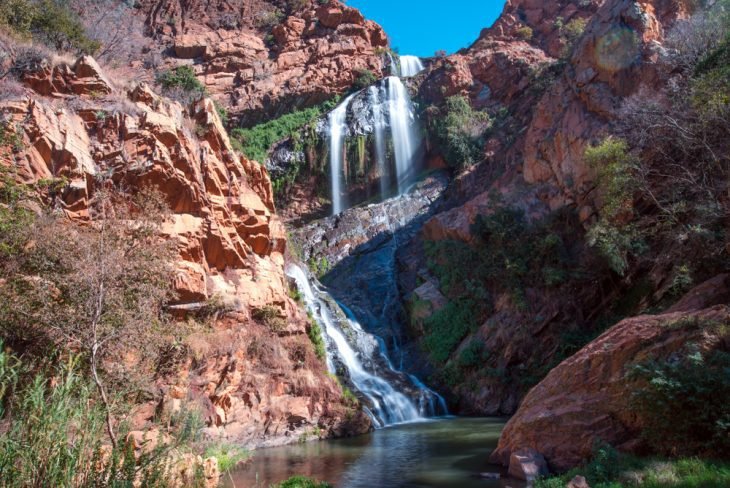6 Easy Facts About Johannesburg North Attractions Explained
6 Easy Facts About Johannesburg North Attractions Explained
Blog Article
What Does Johannesburg North Attractions Do?
Table of ContentsThe smart Trick of Johannesburg North Attractions That Nobody is DiscussingThe Basic Principles Of Johannesburg North Attractions The Definitive Guide to Johannesburg North AttractionsThe Johannesburg North Attractions DiariesFascination About Johannesburg North AttractionsWhat Does Johannesburg North Attractions Do?The Ultimate Guide To Johannesburg North Attractions
You ought to maintain security in mind and vacationers must stay sharp at all times when in strange environments. Speak with the locals when you remain in town to learn about the location you are staying in. Johannesburg North attractions. When on the street (this does not use to buying malls and other safe environments) best basic suggestions is to try your ideal to look like a local and to prevent presenting any type of kind of wide range
The Basic Principles Of Johannesburg North Attractions
Teacher Revil Mason O. J. (Thomson, 1946) checked out the Witwatersrand's pre-colonial background. His archaeological job took off the 'em pty land' myth, according to which the area was empty of human habitation before the arrival of European inhabitants. In his publications Prehistory of the Transvaal: A Record of Human Activity (1962) and Origins of Black Individuals of Johannesburg and the Southern Western Central Transvaal AD 3501880 (1986 ), Teacher Mason demonstrated the extent of social and economic advancement in the location prior to Europeans established foot below.

The 7-Minute Rule for Johannesburg North Attractions
He acted with the federal government's permission, provided after he had actually testified maintain his discoveries key. In 1874, small-scale mining procedures were begun in the Magaliesberg, where an Australian, Henry Lewis, had discovered gold down payments. In 1878, David Wardrop found gold in quartz capillaries at Zwartkop, north of Krugersdorp. In 1881, Stephanus Minnaar encountered gold on the ranch Kromdraai, near the Cradle of Mankind.
In March 1886, a protrusion (soon to be called the Main Reef) was located, quite luckily, on Gerhardus Oosthuizen's farm Langlaagte. Some state that the Lancastrian coal miner George Pedestrian uncovered this reef. One more itinerant English miner, George Harrison (that had actually formerly worked in Australian mines) acquired a prospecting licence in regard of Langlaagte in May 1886.
He chose to proceed in a pursuit for greener pastures, and disposed of his Langlaagte claim for the baronial sum of 10. Alas: under lay the richest goldfield ever found. The discovery of this rich auriferous reef provoked a gold thrill that signalled the end of agrarian tranquillity in the southern Transvaal.
It would, within six years, end up being the largest town in southerly Africa. Within a decade, it would make the Z. A. R. up until then an anarchical and insolvent little state the wealthiest nation in Africa. By the millenium, the Z. A. R. was to exceed Russia, Australia and the USA of America to come to be the world's leading gold producer, creating even more than a quarter of the world's gold.
The Only Guide to Johannesburg North Attractions
It was called Ferreira's Camp, called after Colonel Ignatius Ferreira. He was a Boer traveler upon whom the British authorities had presented the status of Companion of the A Lot Of Differentiated Order of St Michael and St George (entitling him to the post-nominal letters C. M. G.) in thankfulness for his role in the battle that had deposed the Pedi king Sekhukhune in 1879.
Two various other camps were developed: Meyer's Camp on the farm Doornfontein, and Paarl Camp. The latter was nicknamed Afrikander Camp; many people from the Cape Swarm settled there.

Excitement About Johannesburg North Attractions
This name acquired currency by word of mouth, such that the State Assistant verified the name to the Mining Commissioner on 9 October 1886. Stands in the village were auctioned on 8 December 1886. While some stands were marketed for 10, others were torn down for as low as sixpence.
2 years later on, these erven were to change hands for as high as 750 each. The tented camps decreased as a dorp of corrugated iron buildings created and broadened north of the mines located along the Key Coral Reef Road. Locations such as Jeppe's Town (where working-class immigrants erected their dwellings) and Doornfontein (where the affluent brand-new 'Randlords' started to build their opulent houses) were quickly contributed to the ever-expanding map of the community.
Some Known Details About Johannesburg North Attractions
Aside from the road names, there were no signs of Johannesburg being situated in a Dutch-speaking nation. Many years later, C. W. Kearns O. J. (one internet of the initial description children registered at St John's College in 1898) would certainly remember: 'A strange reality about Johannesburg was that, although it was in the [Boer Republic], almost everyone spoke English and even the Government servants attended to one in English, unless they were initial addressed in the Taal (or Low Dutch)'.
Britain had a rate of interest in making certain optimum problems for gold manufacturing on the Witwatersrand, and that the gold was exported to London instead than Berlin a critical provided all the a lot more clamant by the Z. A. R.'s raising toenadering with Germany. Mine proprietors were on a clash with Head of state Kruger, whose plan of monopolistic concessions (usually granted to his cronies) stopped mining companies from procuring materials of products (especially dynamite) and work by themselves, cheaper terms
Not known Incorrect Statements About Johannesburg North Attractions
In 1890, the Volksraad had actually restricted the franchise business to white men that had lived in the Z. A. R. for fourteen years or longer, my company therefore disqualifying many of the immigrants (that occurred to be the major contributors to the fiscus). However, anxiety for the vote was a mere pretext for promoting a various schedule; a lot of uitlanders concerned themselves as momentary visitors and had no intent of continuing to be in the Z.
Report this page